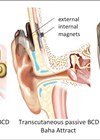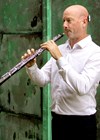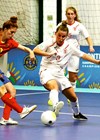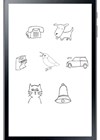Audiology features
The Apple effect: could Apple’s involvement redefine the future of hearing aid technology?
As Apple enters hearing health, this article explores how its tech may reduce stigma and reshape hearing care, without replacing clinical expertise. As hearing health professionals, we are all acutely aware of the gap between prevalence of hearing loss and...
Enhancing care for adults with auditory neuropathy spectrum disorder
It’s time to improve and personalise care for adults with ANSD. Knowing the lesion site could open up treatment opportunities like cochlear implants or new cell therapies. Auditory neuropathy spectrum disorder (ANSD) comprises a group of hearing disorders characterised by...
OBITUARY: Remembering Thomas J Balkany 1948 - 2025
Helen Cullington, our Specialty Editor – Audiology (implantables), pays tribute to a pioneer. Back in 1996 – having worked as a cochlear implant audiologist for three years in the UK – I felt ready for a new challenge. I faxed(!)...
Big data and the future of cochlear implant aftercare
With a million people using cochlear implants worldwide, the time is right for us to harness this vast data for patient benefit. Every day, cochlear implant (CI) processors quietly collect data: how long they’re worn, how often users switch programs...
Lights, camera, hearing: cinema as a catalyst for cochlear implant awareness
Cinema is reshaping how we see cochlear implants – raising awareness, sparking conversation and showing the power of representation. Cinema wields immense power in shaping societal perceptions and sparking dialogue around medical and social issues. In the realm of hearing...
In conversation with Helen and De Wet in Paris: cochlear implants in the year 2074
The World Congress of Audiology (WCA), held in Paris, France, in September 2024, provided a fantastic opportunity to reconnect with colleagues from around the globe. I took the chance to sit outside in the sunshine with De Wet Swanepoel from...
The history of bone-conduction devices
The evolution of bone-conduction hearing devices from the 1400s’ rudimentary designs to today’s advanced models has greatly improved hearing for individuals with conductive or mixed hearing loss. This article delves into the history and technical advancements over the years, as...
Implants and the identity of self
Hearpeers is MED-EL’s international community for people with hearing implants and those considering getting a hearing implant, as well as their families and friends. This group enables people to connect with hearing implant recipients from around the world to learn...
Be who you needed when you were younger
Trainee audiologist, deaf England futsal player and deaf advocate Zara Musker discusses finding her own deaf identity: “It’s part of me but not all of me”. Am I an audiologist? A deaf England futsal player? An advocate for deaf individuals?...
Deaf identity is not cookie cutter shaped: a CI user in a hearing world
Sam Burgess tells us what deaf identity means to her as a service manager in a busy healthcare library, with a cochlear Implant. To begin with, I have been deaf since birth due to congenital rubella. I have not known...
Current update on vestibular and balance disorders in children
Vestibular and balance disorders in children with hearing loss often go unrecognised. This article describes the significant impact such disorders have on the various aspects of children’s development. Vestibular and balance disorders occur in the paediatric population but can go...
Hearing screening during childhood using speech and sounds in noise
Although there is high prevalence of late-onset, progressive, and acquired hearing losses during childhood, these hearing losses can easily go undetected due to the lack of systematic hearing screening beyond newborn hearing screening. In this article, the authors share the...

















